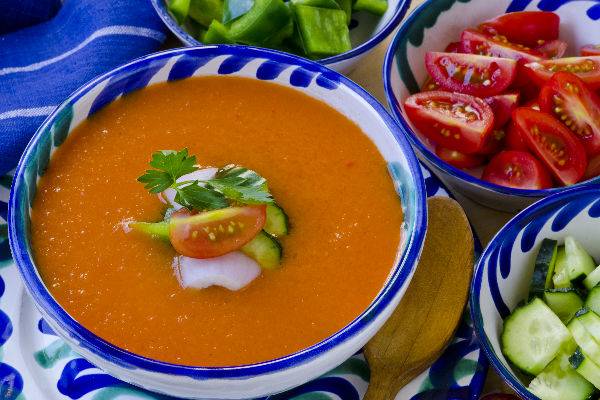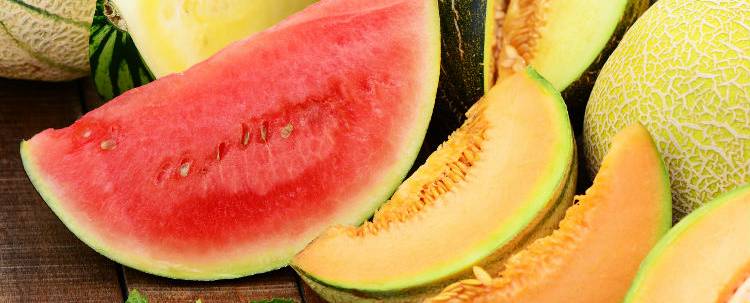Curious about What to Eat in the Summer? Try Some Seasonal Foods
Eating what nature gives us in each season—whether it is surf or turf--is not only healthy; it also makes economic sense. In the summer, orchards are plentiful with a variety of fruits, vegetables and seasonal produce that allow us to prepare fresh and light dishes that help our bodies cope with the high temperatures of the summer months.
how to shop
Share

In the summer, our bodies need fewer calories, but more water. During that time of the year, our own temperature tends to be high and we require more hydrating than we otherwise do. Summer fruits and vegetables not only contain more water; they also have a good amount of fiber, which helps our bodies get all of the nutrients we need to satisfy our appetite without us having to feel bloated.
Speaking about fruit: the crown for the “queen of the summer” goes to either the watermelon or the honeydew melon. Watermelon contains more water than any other fruit—almost 93%, but it is also rich in antioxidants, vitamins and minerals, and it is exceptionally heart-friendly. June, July and August are the best months to try it. On the other hand, the honeydew melon is available a bit longer: you can enjoy this healthy fruit up through September, and it will only add a mere 26 kcal per 100 g to your diet. Honeydew is known for being rich in vitamins A and E. As we know, vitamin E is a protective antioxidant, which serves to prevent cancer, as well as cardiovascular disease. This melon is a laxative, a diuretic and it helps reduce acid reflux. Adding watermelon to your gazpacho, making ice cream out of watermelon or honeydew melon, or even adding slices of either fruit to your salads, are some of the more creative ways of enjoying them. Or, you can always eat them plain, without adding a single thing to them.
Peaches are also a summer fruit. At the end of April, we start to see the first ones emerge, although the tastiest peaches can actually be picked between May and September. And peaches are really healthy. They contain vitamins A B1, B2, B6 C, folic acid, as well as minerals like potassium, calcium, phosphorous, iron, copper, magnesium, manganese, selenium, zinc, sulfur and chlorine. They are also rich in antioxidants and fiber, and they are a low-calorie food. And, during the summer months, plums, apricots and nectarines are at their best. Cherries tend to be finishing up, although we can continue to enjoy them until the month of July.
During the summer months, plums, apricots and nectarines are at their best.
If honeydew and watermelon are the queens of the summer, in terms of vegetables and orchards, the king of the season is, without a doubt, the tomato. Even though we can find tomatoes the entire year, the fruit is at its absolute best during the summer months. If you use seasonal tomatoes to make gazpachos, salmorejos, or any other fine dish in the summer, you are pretty much guaranteed success. Using raw tomatoes in a salad with a little bit of salt and dash of olive oil makes a perfect start to any light dinner. Another tasty option is to gather tomatoes at the end of the season and to make preserves out of them or to pickle them. This allows you to enjoy tomatoes during the entire year. Let’s not forget that the tomato is one of the healthiest foods around…and one of the least caloric.

Other typical summer vegetables include cucumbers and bell peppers, which are also part of any gazpacho. Cucumbers not only contain a lot of water. They also have a lot of vitamins that give us energy and strengthen our immune system. Although many families prefer to peel cucumbers before eating them, it is actually better to eat them with the peel: the peel is very rich in vitamin C.
Bell peppers are incredibly good for you. They are special because of their high vitamin and mineral content. They help you lose weight. They cleanse your body and they help with digestion. The beta carotene in bell peppers makes them an important antioxidant in your diet. Try them raw in a salad or grilled with all kinds of different dishes. They are an ideal complement to our summer meals. We can top off our shopping basket with zucchini, beets and rutabaga.
And What About the Surf?
Although it is possible to get almost any kind of fish year-round, the ocean still has its natural cycles. Clotxina is a type of clam that is smaller and whose filet is much more delicate than that of its Galician or Catalan relatives. And the summer months are the best months of the year to fill yourself up with any kind of shellfish: shrimp, king prawns, scampi or lobster can be the perfect match for our summer dinners.
Sardines are another one of the classics that you should not miss on a July or August night. The most traditional version is grilled, but you can marinate the so that they go well with sandwiches or salads. They are not only delicious; they also good for you, since they are rich in omega-3 unsaturated fats, also known as the “good fat”. Sardines are good for reducing cholesterol and triglycerides and they help prevent cardio-vascular disease. And you can combine sardines with other fatty types of fish that happen to be in season, like tuna or anchovies.

Watermelon and melon, excellent summery fruits
Read more
Watermelon and melon, excellent summery fruits






